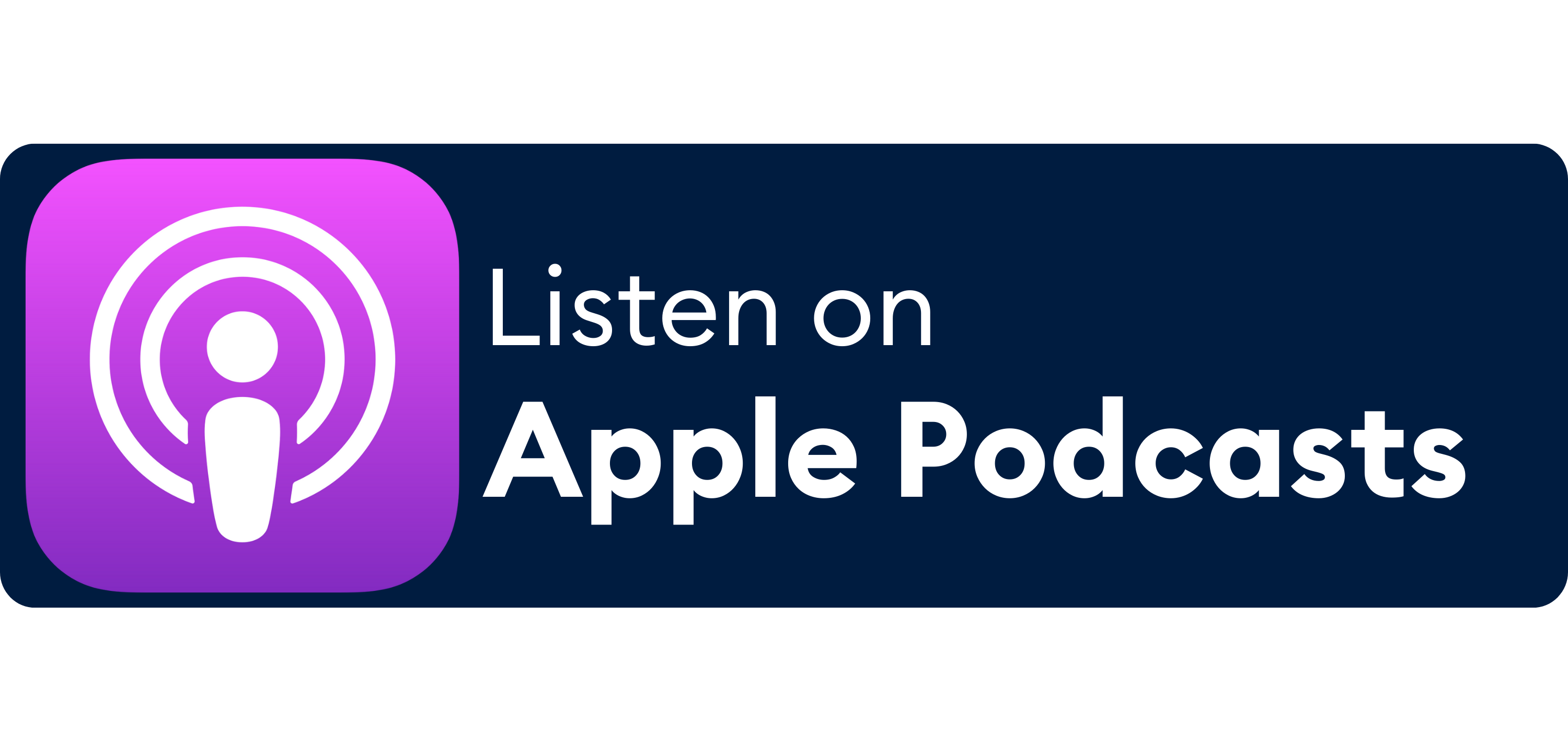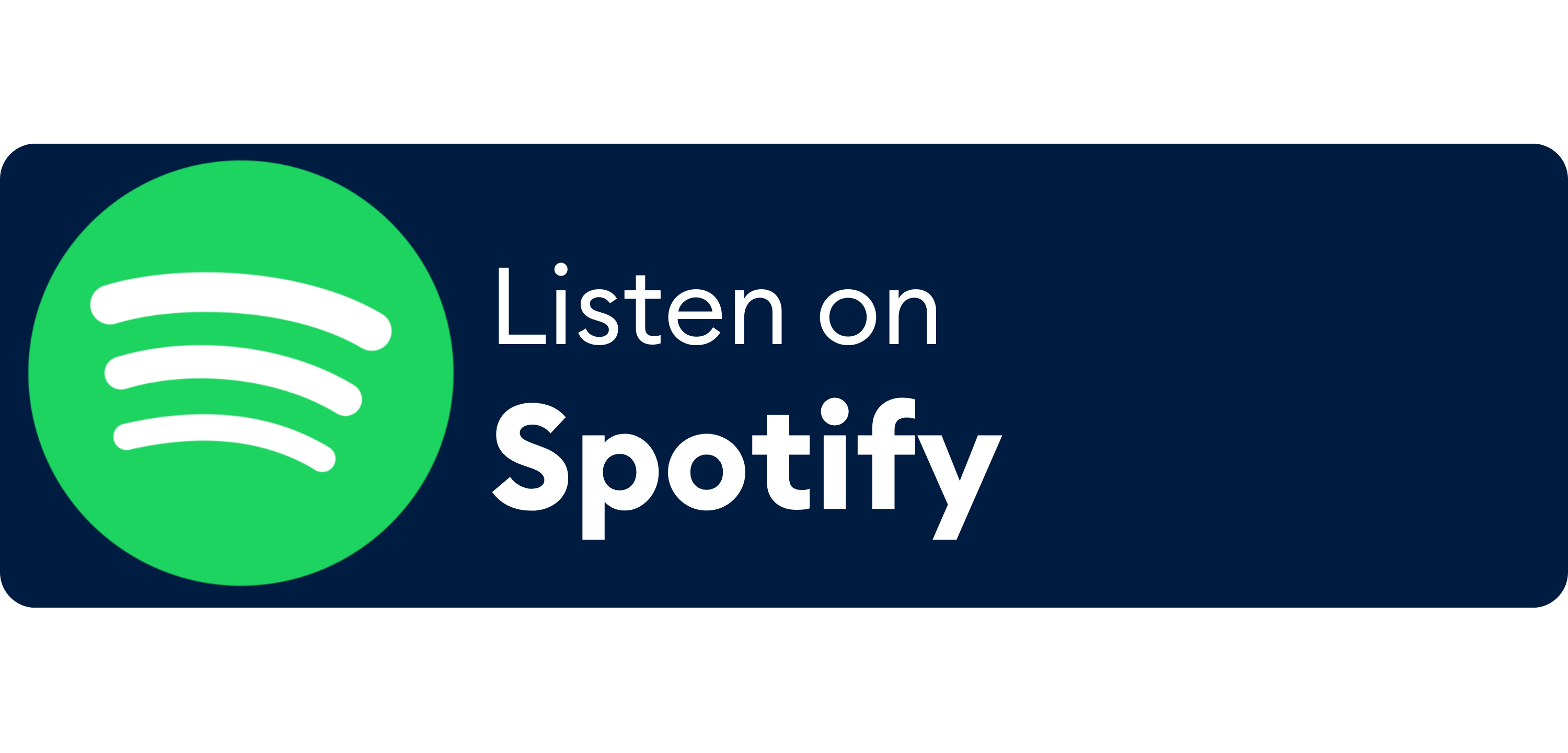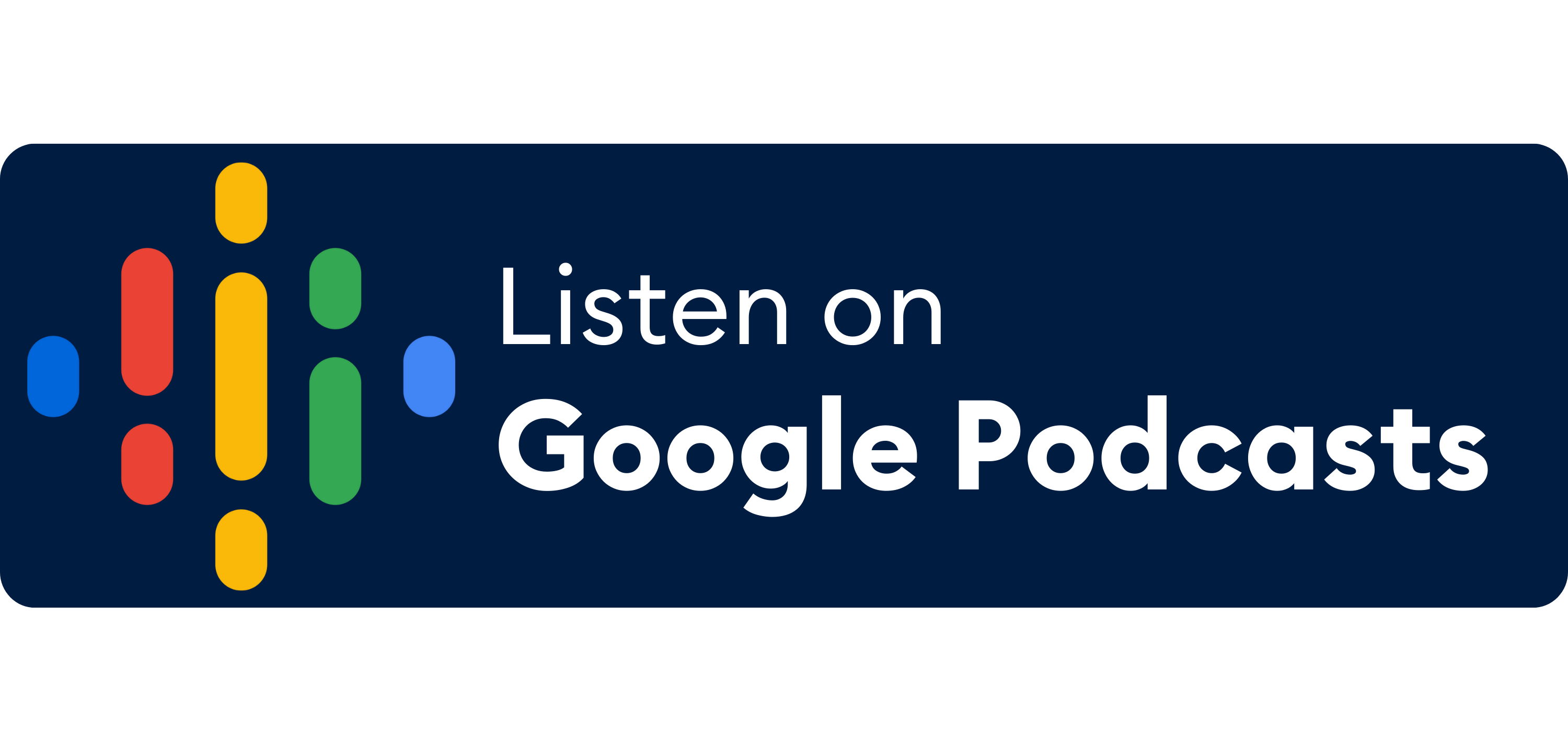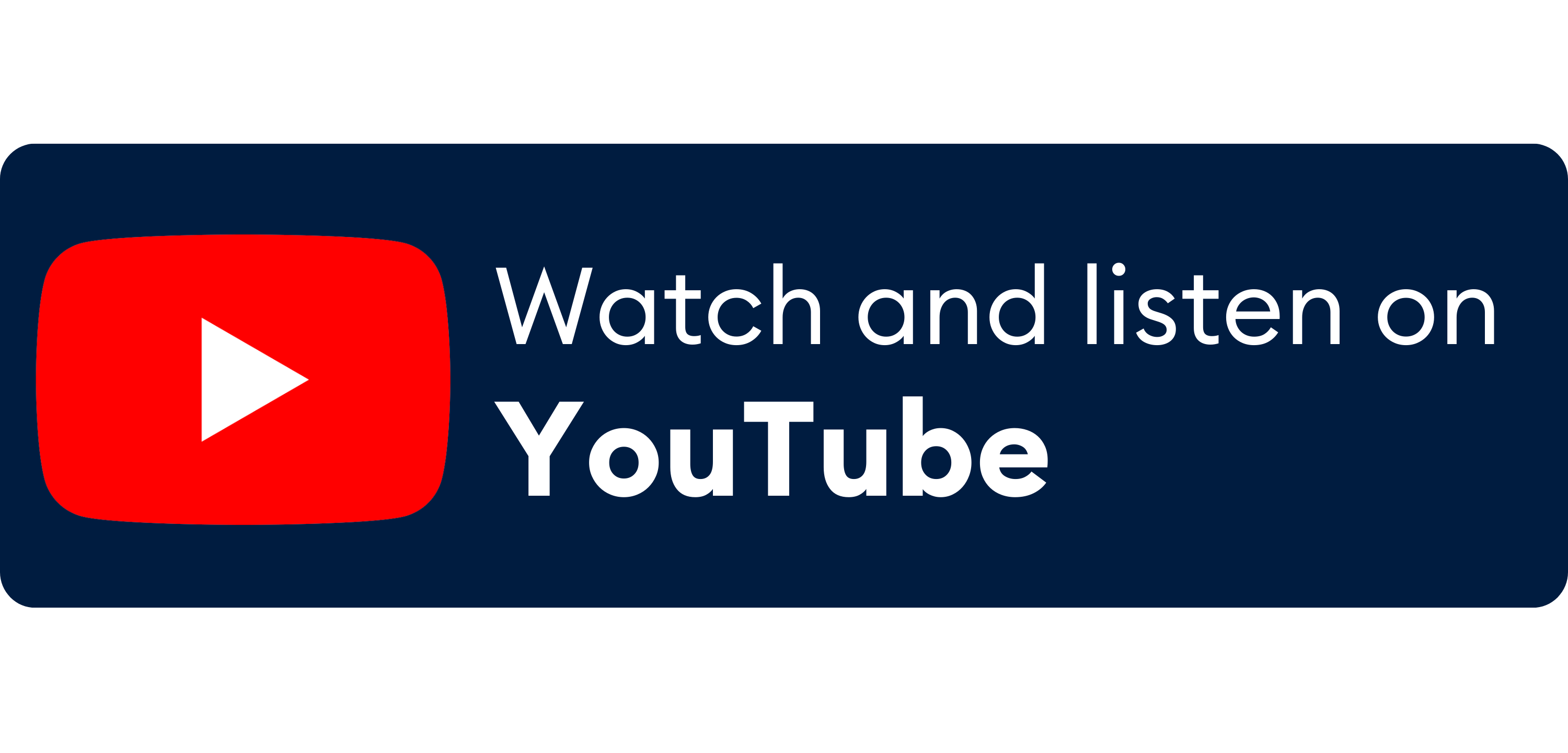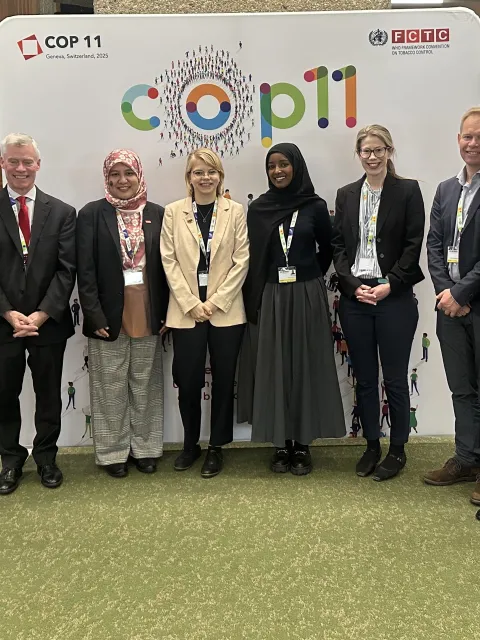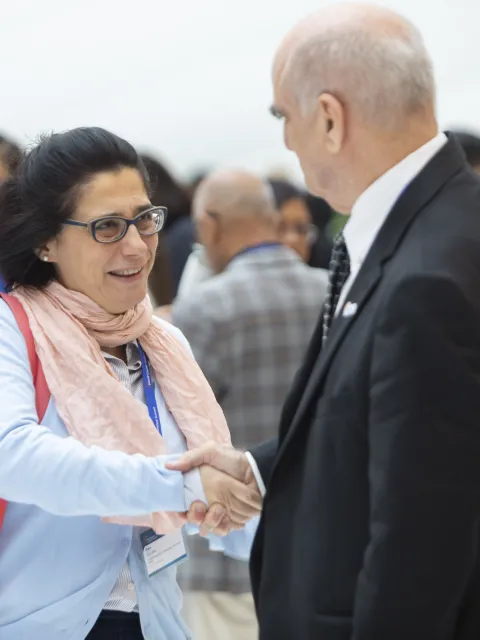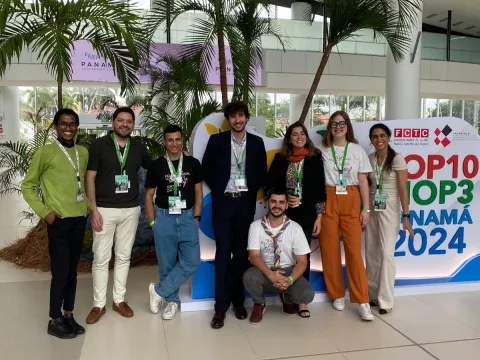
Around 8 million people die because of tobacco consumption every single year, leading the tobacco industry to search for new users. Increasingly, it is targeting youth in the hope of hooking a new generation to tobacco products and creating lifelong consumers.
To protect youth from tobacco industry interference, we must ensure that their perspectives are heard.
In this episode of Let’s Talk Cancer, Cary Adams, CEO of UICC speaks with Agamroop Kaur, National Youth Advocate of the Year of the Campaign for Tobacco-Free Kids and David Planas Maluenda, global health policymaker at the Spanish Association Against Cancer in Zaragoza and Youth Ambassador Against Cancer at the European Cancer Leagues.
See podcast transcript below
Listen on: Spotify | Stitcher | Apple Podcasts | Amazon Music | Audible | Deezer
Podcast transcript
Cary Adams: Welcome to Let's Talk Cancer. My name is Cary Adams, and I'm the CEO of the Union for International Cancer Control. Around 8 million people die because of tobacco consumption every single year, leading the tobacco industry to search for new users. Increasingly, it is targeting youth in the hope of hooking a new generation of tobacco products and creating lifelong consumers. According to the World Health Organization, most of the current adult tobacco users worldwide started tobacco use during adolescent years. Nearly nine out of ten smokers start smoking before 18 years of age. In order to protect youth from tobacco industry interference, we must ensure that their perspectives are heard. That's why UICC is welcoming on Let's Talk Cancer Agamroop Kaur, who was awarded the National Youth Advocate of the year award by the campaign for Tobacco Free Kids and created a documentary called Big Tobacco Bigger Epidemic, and David Planas Maluenda, a global health policy making and research specialist working at the Spanish Association Against Cancer in Zaragoza and a Youth Ambassador against Cancer in the European Cancer League. In this podcast, we'll discuss the tobacco industry, tactics, from influence on social media to the alarming increase in vaping. We'll also delve into solutions through informed advocacy, strict regulatory measures and community engagement in creating a tobacco free future. Agamroop and David, thank you so much for joining us today. Perhaps I could just start off with the challenge that we face with tobacco: it does kill half its users. And those who don't quit will probably die of cancer or lung cancer at some point. Taking off the last ten years, 15 years of their life. Do you think the younger generation are really aware of the long term impacts of smoking when they start smoking?
David Planas Maluenda: I think the short answer is no. If you want the short answer. I think young people do not care about the future impact of their present actions. Nowadays, I think we live in a time of ephemeral fashions. We have very short-term thinking and things that may happen in many years do not to worry young people.
Cary Adams: What about you Agamroop?
Agamroop Kaur: I would totally add to that. I think here in California, we especially see a greater awareness that exists around the use of tobacco products and the linkage with cancers and diseases. But like David said, it doesn't always impact the short responses that we might have in the moment.
Cary Adams: So it's not as if it's remote and distant. It's often grandparents who died. My grandparents who smoked, died of lung cancer. It is in the family. You attend the funeral, the discussion takes place. So why is it that that does not get through to younger people? That there's a consequence of a lifetime of smoking, that that person has died through a cancer.
Agamroop Kaur: The new products that come out aren't seen as as dangerous as necessarily a cigarette. So when you see vaping when it was originally marketed by the tobacco industry, it was seen as a water vapor that you were using. And I think that creates a perception that, "oh, maybe this product is safe" and that deception is a really good tactic for the industry in getting more users on their product, because now we can't even conquer that image of safety that comes into the mind of with these new innovations.
Cary Adams: Let's talk about those new products. So how are they marketed then? How do you perceive them being marketed to the younger generation? David, why don't you start?
David Planas Maluenda: Yeah, marketing is changing the picture nowadays. The way they do advertisements is really different than before. Before in Spain it was very common to see in newspapers, in television and radio. And now it's banned. So they have to find now strategies and target new groups. Young people start smoking at a really, really early age and the industry knows it. So they target these people where they are, on the internet most of them.
Cary Adams: You're suggesting that it's social media is playing a larger role. What do you see? What do young people see on social media?
Agamroop Kaur: I think it's really the influencer content. That's the biggest piece, i think. What better way to reach youth than the influencers that they're following, right. Like the people that they look up to, the people that they're entertained by. So the industry has done a really good job of creating this social and party scene that's really attractive to youth because their influencers and their celebrities are doing it. And I think it's a really great resource for them to be able to meet youth exactly where they are. Youth all the time are on social media for resources, for entertainment, for meeting their friends, for being connected worldwide. And it's just a great entry point for the industry.
Cary Adams: I mean, when I was your age, many decades ago, you could see smoking in Hollywood films. It was on the TV Formula One, which I love. It was on the side of all the cars in Formula One.
David Planas Maluenda: Yeah, and product placement in movies, in Hollywood, in TV series is still a problem, actually, principally in Netflix, HBO or any platforms, video on demand platforms. And when they appear in movies, television shows, music videos, video games, it normalizes and glamorizes smoking.
Cary Adams: You've spoken about the three A's, which are attractiveness, appealability and availability. Can you explain to us what you mean when you talk about the three A's?
Agamroop Kaur: Sure. The attractiveness aspect is exactly what we're talking about right here. Being on social media, being in media with celebrities, just creating that normalization of vaping and tobacco product usage. And the availability, I would say really comes from the product itself, the flavors, the colors, the way it's placed in different advertisements. Basically like the thing that really addicts youth to the product and then the availability is really that aspect of where do you see this product being accessible? Is it something that youth can buy right off online, or is it being sold in stores around a youth centric areas? Is there a store across the street from a school? And how are youth being able to access these products? If it's really easy to do so and the product is so attractive and addictive, youth are going to be wanting to use vaping products more and being able to do so. So it's really about all those three components that go into that product.
Cary Adams: If the industry is so good at doing this, this enticement and getting people to start smoking, why is the the anti industry people like me so bad at doing the complete opposite? So David what's your view on that.
David Planas Maluenda: First of all, not having the same amount of money. They have a lot of money and they do so many campaigns. They have so many influencer people that do campaigns. And we also need a stricter regulation from the government. They have no regulations to with new products, with product placement, with advertising. And we need governments to take part here because the imagery about this product is really positive, especially among young people. They don't see vaping like as bad as smoking traditional tobacco, and the industry knows it and use it in their favor.
Agamroop Kaur: And to add to that, I think the policy aspect is especially crucial. And I think even more than that, can we make health as attractive as the industry makes tobacco products? We could do that through the educational resources, through the marketing, through the industry: make health easy to be done. Health shouldn't be a chore, right? And I think youth often think of it as that way. So changing that perception can go into making long term consequences for the better.
David Planas Maluenda: I think we have to to see our mistakes too. And maybe we are talking about health and young people are not worried about health and they worry about, the economy, environment, inequity, gender. They have other worries. And we can talk about tobacco from other perspectives. And maybe this can be a solution.
Cary Adams: I mean, that may be a good pathway, actually, because the industry itself is accountable for so much for deforestation, poor quality agriculture, and the stubs on cigarettes, for example, contain so many chemicals and they're washed into the rivers and the seas. And that is certainly something which I know my children who are 29 and 27 are more concerned of. That is something which is important to them about, you know, the climate and the impact on agriculture, etc. One of the the issues that's raised quite a bit, but not fully understood, is the link between tobacco use and mental health.
Agamroop Kaur: I think one thing a misconception that often comes in youth minds is using vaping as a means of coping. And what we've really seen through the data, for example, in a study out of the American Heart Association, shows that people who are using vaping products or tobacco products are actually experiencing more anxiety symptoms and depression symptoms, and that what really goes to show us is we need to be able to create educational content around what are actual coping mechanisms, mechanisms to deal with stress, instilling that into our education system so that youth are able to gain these mechanisms and carry out for their long life after that.
Cary Adams: What about yourself, David?
David Planas Maluenda: Yeah. And as we see that smoking can cause, for example, anxiety, when you talk with health people and you say, "why do you smoke? Why do you start smoking or vaping?" And they say, "because it's calming and relaxing and it quits anxiety." And we are seeing that duality between the data and the reality and the perception of healthy people. I think they are really concerned about their mental health and all the problems related with it, but not with the causes, the real causes of the issues in their mental health problems.
Cary Adams: It seems a shame that you take on a product to address what you think helps your mental health, but actually is a greater harm to you overall in the longer term.
Agamroop Kaur: And if I could just add one thing, there was a campaign done by the Truth Initiative on this depression stick. It's actually something that I've seen over Twitter again and again. And I think that imagery of the vape being a depression stick was really great at sort of formulating that mental image that this isn't something that's going to help you. It's actually going to worsen you. And so I think campaigns like that are really powerful.
Cary Adams: We still need, though, the workable policies, which are attached to traditional cigarettes like pricing with taxation, labeling, public places not being used, etc. Is that something which you see as being critical with regard to vaping and e-cigarettes as well?
Agamroop Kaur: Actually, it's funny that we bring this up because I am actually in Sacramento today to work on a bill to really continue to create that limitation around vaping products and honestly, all flavored tobacco products. Two years ago in California, actually, we originally got a bill passed to ban all flavored tobacco products in 2020, but the industry was able to sue and delay it till 2022. And now when they went in enforcement in 2022, it created a great change. We see a lot less of an accessibility standpoint for flavored tobacco products, and we've now come back in 2024 this year to really create further enforcement. So understanding what is a flavored tobacco and what isn't, and really creating a list so that it's clearly noticeable and so that enforcement is easier. And I think that really goes to show that California is very stringent on wanting to make health a reality.
David Planas Maluenda: Yeah, I think so. Here in Spain it happens the same. The access is really, really easy to young people, even minors. The tobacco it regulated here to to minors, but they can access really easy in every supermarket, in every shop, not only in tobacco shops, in every shop you can see vapors and it's a real problem.
Cary Adams: I was in a meeting I think it was last year and they were we were talking about the fact that the traditional cigarette has really hardly changed over 50 years. I mean, it's the size, shape, filter, box, color, content. It's not really changed. One of the challenges with e-cigarettes and vaping is that there are numerous products coming from multiple companies, and they're iterating so quickly that it's actually very difficult to pin any one of them down to say whether they're good or bad, because there's not enough time to identify whether they're good or bad. Now, my concern is that gives liberty to the industry to do what they want, because they know that there's not going to be sufficient research to show that there's a link between their product and cancer, because the delay of ten, 20 years, you know, their product will be out. They've made their money, they've disappeared. So do you have the same concern, David? Perhaps you could start.
David Planas Maluenda: I'm really concerned about it, too, because I'm seeing that the new products, that marketing strategies that all the the industry is doing is going faster than than we are, than us as society, as regulation, investigations and knowledge around the products. And that makes that people are not aware about the problem.
Cary Adams: Agreed. What about yourself?
Agamroop Kaur: I definitely agree with that. And I think we've seen that with our legislation having to try to keep up as well, where when we pass our legislation 2022, we included all flavored tobacco products, including menthol. And the industry was able to find sort of a workaround and has created menthol-like products. So products that do the same thing that menthol does in terms of making a cooling agent and having that harm feel less than when you're using a tobacco product, created products that do the exact same thing, but they aren't called menthol. And so what we really wanted to do with updating the policies include that definition to really ensure that they're not able to create products at all that include any sort of liking of flavors. And so it really goes to show that we have to continuously try to update the policy and be very quick about it before they can innovate even more.
Cary Adams: Is there anything that you think we should be doing more to educate governments or influence governments to avoid the influence of the of the industry?
David Planas Maluenda: Yeah. I think that we need to create some evaluation indicators because it's a really complex issue. And we need to evaluate factors such as accessibility, advertisement, perception consumption. And this requires time, knowledge and money, but this evaluation gives us gives us that data to work with and and to take action.
Cary Adams: What about yourself Agamroop?
Agamroop Kaur: I would like to add to that on two components. I think the first one I would say is it would be really great if we could have a transparency measure between which government officials are taking money from the industry, so that we understand as voters who we want to elect and put into office and make those decisions for ourselves. And I think that understanding would really create the public information to be able to then make the correct choices that we think would represent ourselves. On the government standpoint, in terms of educating government officials themselves, it's something that I've had a little bit of experience with in creating my documentary. Really to create just a small resource that government officials can be educated on why a policy is important, what research is saying about it, and makes it so persuasive that they can't say no. When we say that we want to protect children, how could you say no to that? And so really instilling that within government officials.
Cary Adams: The other thing I think they may need educating on is this line from the industry that, for example, vaping and e-cigarettes is low risk. But I don't think people really understand what the industry is saying when it says this is a lower risk than traditional cigarettes. It just means that your chances, if they're right and we don't know if they're right, your chances of dying through this are lower than if you use a traditional cigarette.
David Planas Maluenda: We did a study from the Spanish Association Against Cancer last year, and we presented some data about what young people think about these new products. And they imagine it's like, many years ago with traditional tobacco, but they think it's better because it doesn't leave bad smells, that this it's easier to quit, that it's fancy that they want to share experiences with their friends with vapers and e-cigarettes. The imagery is very good and they don't think it's so harmful.
Cary Adams: How do you evaluate, then, the effectiveness of current anti-smoking campaigns targeted at young people? Do you think they're good? And if they're not good, how could they be improved.
Agamroop Kaur: In terms of the anti-smoking campaigns in the work I've done, I've seen it being done in several different ways. I think the biggest impactful one is when it's done from peer to peer, when we're talking from youth educating their classmates or youth talking and having discussions with their own friend groups. And I think that's what really creates the norm change. And I've seen it done in some great creative ways here in California, where we have the Stanford Reach Lab Youth Action Board and they host a Forum Theatre. So essentially recreating these scenarios where youth might be in a peer pressure situation. And how do you get out of that? And I think that's so impactful because it teaches youth that, "hey, this might be something that you are in in the future, whether it's high school or college or beyond, and you can have real skills to say no." And learning how to do that is just so impactful and can create the difference between having a lifetime addiction and not, so I think that's really impactful. But in terms of sort of the campaigns around just like general education, they can definitely be done better through social media. We have so many tactics that we can use, and just really utilizing influencers in our own movements would be an amazing turnaround.
Cary Adams: David. Any views?
David Planas Maluenda: I just want to add that we don't have to work for young people, but with young people to achieve our goals in the fight against tobacco. For example, last year we hosted the European Conference on Tobacco or Health, and we started a health alliance with other Spanish and European entities, and we presented it in the conference of the parties in Panama with a group. And we are having really great results with a lot of entities and young people talking about tobacco and raising their voices and making advocacy. And I think it's really important to work with the health people. And I want to make a call also to young people that hear us, that they can take part, that they can join us and fight against tobacco because it affects everyone.
Cary Adams: So how did you two get involved in all of this, David, how did you start?
David Planas Maluenda: Well, I started, while I was working in a low income neighborhood here in Zaragoza. I saw a really big problem with tobacco consumption, and they don't have any concerns. And I was like, well, I think there is a problem here. And young people, they worry about everything but tobacco. And then I started working here in the Spanish Association Against Cancer, i saw the reality of what tobacco is causing and how can we react and what can we do to fight it? And it's so important to educate people in the streets, in the schools, but it's so important to make advocacy and to talk with politicians to raise our voices. It's so important to share our message in every statement. And that's what I'm doing now and and how I'm getting involved.
Cary Adams: And Agamroop how about yourself?
Agamroop Kaur: Yeah, I got involved around 7 or 8 years ago when I was in middle school, and that really stemmed from seeing my peers using Juul products. And at the time, nobody knew what Juul products were. We still all believe that this was water vapor, that there wasn't any harm. And when I was talking to my health teacher once in a conversation and she brought up that these products were actually really harmful in my mind, I was so confused. I was like, if it's so harmful, why is everyone doing it? And I think that question is something that I worked to answer at that time. And that realization just pushed me forward to wanting to educate more people to protect our communities. And I have siblings as well. And I definitely don't want them to be getting into this. So that's really why I continue that advocacy.
Cary Adams: Well, I'm glad you're both in it. I was in a conference the other week, and it was the last session on the last day, and it was actually a packed room. And I'd say the average age of the people in this conference was about 40 to 50, something like that. And a young lady put her hand up at the back and asked a question to the panel, which I was on, and she was saying, I'm a young person in this environment. I've got great ideas, but no one listens to me. Do you feel that the cancer community listens to the young people?
David Planas Maluenda: Everyone talks about young people, the importance of listening to young people. And there is no young people in important places. And we need to be heard, but we don't have the space to be heard.
Agamroop Kaur: I think I totally agree with David. I think we're both at COP10 together. And that was the first time any youth were at COP10. And I think that really goes to show after ten conferences when we're talking about youth, every single conference about an issue that affects youth so prominently, why weren't we included from the beginning? And I think that's sort of reminiscent of something that we should be doing across the board. I have had experiences that I think have been really great for me to be able to represent my voice and my community, and I'm really grateful for those. But I think there still is a large amount of work that needs to be done in including youth in these solutions.
Cary Adams: David, now your work on the interest focus on how commercial, environmental, economic and social factors determine health outcomes, which is also a focus of UICC's work as well, actually, and our Close The Care Gap campaign for World Cancer Day in the last three years has been about this sort of thing. So how do these factors intersect with the tobacco industry, interference and the need for stricter government control and regulation of tobacco. How does it all work together?
David Planas Maluenda: I think there are many studies that link different factors to smoking problems, like socioeconomic status, age. When we are talking about young people, age is one of them, ethnicity, gender or sexual orientation are some of them. The tobacco industry aims to make money by campaigning, diversifying products and interfering in policies to maximize its profits. And countering the lobbying of such a large industry is difficult, but it's not impossible. We have to share a positive message too. Health bodies must take part in this. But they should know that they are not alone. Just as it affects all the groups mentioned above, we can count on them to speak out and find out what they need to know about tobacco, how to tackle it and make effective policies. This is something that we promote every day, and we are trying to to do it and having great experiences.
Cary Adams: Well that's super. And Agamroop your documentary, Big Tobacco Bigger Epidemic, is addressed to the president and Congress in the USA. So what did you hope to achieve through that documentary?
Agamroop Kaur: That documentary was about creating a resource that's easily accessible to policymakers, to youth, and to really anyone in society that wants to learn about what the e-cigarette epidemic really looks like. At the time when I was researching, I noticed that there were so many different information, so many different research articles, so many people to access and talk to. And so in the process of learning myself, I was trying to see like, how would I want someone else to learn this, what would make it easy for them? And so creating that like 5 to 6 minute documentary as just a small resource that's really persuasive in building policy is what I hope to achieve. And I think just seeing the success with it has just made me just really grateful for having taken that opportunity and wanting to do something a little bit outside the box, and has led me to other educational initiatives as well.
Cary Adams: What is happening in in the fight against the tobacco industry and the use of vaping and e-cigarettes? What are you proud of? What do you think is working? And if people listen to this from around the world, what could they take away and maybe push for in their own country? What experiences have you got that's really maybe got a potential of making a big change?
David Planas Maluenda: In Spain we have a regulation of tobacco, but we think it's not enough. We need to to take part, and we are starting the smoke-free spaces where we liberate some places from tobacco smoke that are not currently regulated by law. And we chose these spaces by the presence of children and teenagers like park, stadium, swimming pools and other places. And people accepted this really well. And local governments joined the action too. And this week the national government announced has announced a change in the tobacco regulation. So we are really happy about this news
Cary Adams: That's super, David. Agamroop, how about yourself?
Agamroop Kaur: The hope comes from those youth alliances. Just recently, this April 1st Campaign for Tobacco Free Kids hosts the National Day of Action, where youth across the country are holding events in their communities, whether that's a school event or an event to educate their policymakers or a march at the Capitol. And that really gives hope because now they're able to come together and create that norm change, create the policy changes. I hosted one at my campus at UCLA. What we did specifically was to have mental health resources and cessation resources for students on campus that want to quit. And so attacking that issue from different realms in our own communities, I think, really goes to create a powerful message nationwide, and we do it together. So that's what's really empowering about it.
Cary Adams: Super. You're both inspirational. Agamroop and David, thank you for joining us today.
If you're interested in tobacco control, why not listen to episode 20 on Tobacco and Alcohol Industry Tactics, an episode four on the environmental damage caused by tobacco production. Please do get involved this World No Tobacco Day on May 31st. You can find out more information about Tobacco control as well as social media toolkits to use.
Last update
Wednesday 15 May 2024